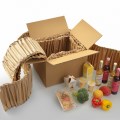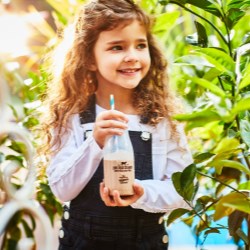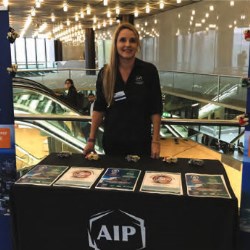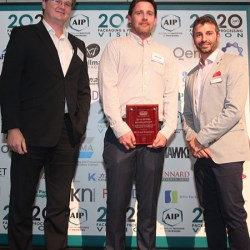If this is your company, CONTACT US to activate Packbase™ software to build your portal.

A group of four food processing experts presented at the Australian Institute of Packaging’s (AIP) meeting in September, the official start of the Australian spring.
A paddock full of members of the AIP and the Society of Plastics Engineers (SPE) were corralled by the organisers to discuss issues and developments around packaging innovations and trends in the meat industry.
Professor Srinivasan Madapusi (Srini) from RMIT University was the ‘Judas lamb’ but there was no slaughter on the night. Srini talked about issues around plastics packaging and their effect on a sustainable future. His chemical engineering knowledge was front and foremost but he managed to bring it down to basics and into the area of nano technology. It is believed that the future will be in nano technology with a positive impact on the environment. But as Srini said the overarching need is for packaging to be environmentally benign, so that waste matter can be converted into energy and packaging film. Nano technology is not a solution as a solution but must be presented on a hard surface to gauge the efficacy. Volatile organic compounds (VOCs) sensors will play a major part of the future as a wide range of carbon based (organic) chemicals (compounds) are found in various man-made and naturally occurring solids and liquids. As the name infers they are volatile compounds that need specific control to achieve their worth as a packaging substrate.
Australia is the largest producer and consumer of meat and as tastes and consumer behaviours change the packaging industry must be up with, or ahead of the herd.
Studies show that perception is extremely important, as an example of a limp or crispy cauliflower demonstrated. Modified atmosphere packaging (MAP) techniques can extend shelf life by over 400% and also increase tenderness and juiciness.
The topic of the evening was meat and Srini addressed colour, oxidation, and temperature issues and enlightened us about myoglobin that gives meat its red colour. On the topic of packaging he proffers that it prevents contamination, reduces external influences that affect smell and taste; and as meat is high in the ranks of globally distributed food it could not exist without packaging. Srini as well as MAP had penned up other packaging trends such as intelligent, vacuum and active and delivered a summary of each.
His final message was sustainability is number one and packaging will be protecting more that it consumes. Alan Adams, MAIP, Market Manager - Retail, Case-ready Meat, Poultry and Seafood at Sealed Air followed with an opening remark that his company’s mission was to create a more secure and less wasteful global supply chain. It has been found that consumers think packaging is more damaging to the environment than food waste probably because the packaging is left when the food is consumed and visibility plays on folk’s minds.
The middle classes are consuming more and more protein and also wasting food possibly due to larger than needed package sizes offered by retailers. When meat is bought at a butcher one or two cuts can be bought but in the chiller cabinet meat is generally in multiple cuts.
Food waste has environmental, economic and social impacts, but programs like National Food Waste that has a desired outcome of a 50% reduction in food waste by 2030 are all positive. There are some conflicts in the trade as the retailers are controlled by sale by date whilst the consumer is checking the use by date. The latter have a sort of NIMBY attitude about these issues and marketing needs to consider ways to address the conflict. Consumers want packages to be resealable and clearly show the use by date.
Alan explained that an unwrapped cucumber had a shelf life of three days whilst a wrapped one lasted for 14 days. Nearly half of consumers surveyed said they switched to wrapped cucumbers when shown the shelf life advantage. Packaging has assisted in the expansion of home delivered meals and also converted ‘take out’ cooks to home based preparers. Duck was a poor seller until the brand owner introduced cook in the package retail units. Sales have grown exponentially and it is noticed that the chicken producers have also introduced similar cook in the bag products.
Alan left us with this mantra ‘if you tell consumers what you are doing for them they will reward you’. Michael Lee MAIP, Manager, High Value Food Frontiers Meat & Livestock Australia (MLA) was probably not going to talk much about two legged animals but those which have four were given a good run. Meat & Livestock Australia Ltd (MLA) strives to be the recognised leader in delivering world-class research, development and marketing outcomes that benefit Australian cattle, sheep and goat producers. Working in collaboration with the Australian Government and wider red meat industry, MLA’s mission is to deliver value to levy payers by investing in initiatives that contribute to producer profitability, sustainability and global competitiveness.
Michael stated clearly that partnerships are the solution to improve the value chain and that packaging is an enabler of value creation. One needs insight into where meat will be prepared and consumed.
He indicated that change happens all the time and often subtly. What should we do, not what can we do, and what’s now, what’s next and what is possible keeps him focused on putting customers at the centre of all developments.
Put the consumer at the centre and work out for there has worked for MLA as witnessed by the myriad of new consumer packs available for sale. The same meat can be many products all of which need different packaging. Increasing shelf life and visibility is most important as the consumer can only make a buying decision by what is able to be seen. We learnt that different plastic packs are needed for ready to remove meat that will be cooked at home, ready to cook meat such as the aforesaid duck, and ready to eat meat that is now on offer at supermarkets.
Irrespective consumers must be able to open the package so eating regimes must be understood.
Lifestyle choices vary and whilst one consumer may take a ready to eat meal home another may want to open it and consume it whilst walking. Smart labelling to explain the product will be very much involved in developments around meat packaging. MLA has a global oversight and is very concerned about substitution in export markets and what packaging methods can be developed to ensure that “paddock to plate” is discernible and cannot be curtailed. Right now the focus is on consumer behaviour but all indications are that ultimately consumers will be less and less involved in choosing food. Smart kitchens are already in vogue and will continue to interface across the whole supply chain.
Vision technology
Stuart Shaw Red Meat Business Manager Scott Automation + Robotics delivered his address with a series of video clips that explain how robotics has added value and safety to the meat processing industry. He explained that robotics is driven by vision technology, and the efficiencies and safety that are delivered.
Innovation that ensues from robotic processing leads into reduction of waste and profitability. Witnessing the ro bots processing lamb carcasses with surgical precision and to an exact specification for the particular animal was quite breathtaking.
The skinned and cleaned animal is x-rayed and a specific processing program continues. This ensures that all (for instance) legs of lamb produced are exact in detail except proportionally.
Thirteen years ago there was only one robot in meat processing plants but now there are many all with improved technology. The video showing lamb processing showed how the robot can process the carcass continuously in a programmed safe manner. Before the human cutter with a hand held circular saw was very much at risk of injury. But human processing is still part of meat processing and Scott Automation has a system to eliminate serious injury. BladeStop™ is available worldwide and is uniquely designed to reduce risks of serious injury by mechanically stopping the band saw blade when the unit senses that a person has come in contact with the blade.
BladeStop is available in two sensing methods. Upon sensing contact with the operator, the blade stops operating within 9 milliseconds. This can be a huge difference between having just a small skin cut or an amputated finger. In addition Glove Check can also be added which detects the operator gloves moving at high speed in a zone directly upstream from the meat saw blade. This triggers the mechanism to stop the saw blade. (Deflates the old joke about the butcher that backed into the band saw and got a little behind in his work)
Another video showed Automatic Guided Vehicles (AGV) moving packed products into cold storage. From a materials handling and productivity point this showed a major breakthrough in technology. Robots place the packaged goods directly on a pallet which sits on the AGV. This eliminated forklifts and the reduced the floor space needed to manoeuvre the unit loads. So after a question and answer period delegates departed and on the way home had many thoughts to process along with digesting the chicken meal that had been served by humankind. “As a vegan I think people who sell meat are disgusting; but apparently people who sell fruit and veg are grocer.”
The recently born lambs will gambol in the paddocks for some months to come but many will later be processed and packaged for sale to hungry consumers. But one sure gamble is that not any of the meat will be consumed by a robot! (Not yet anyway.)



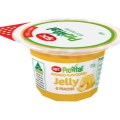
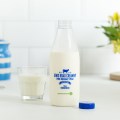

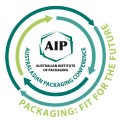
.jpg)







